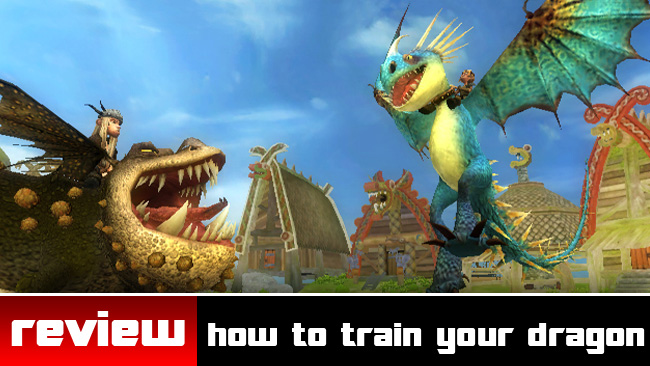
Dragon’s game mechanic is a fresh departure from other licensed games, but poor design choices keep it from ever surpassing mediocrity.
Vitals
How to Train Your Dragon
Publisher: Activision
Release: Available Now for Xbox 360, Wii, PS3, and Nintendo DS
When copies of How to Train Your Dragon showed up on my doorstep for review, I thought I had it made. “Reviewing bad games is fun,” I thought. “I’ll be able to easily see what I like and don’t like. Plus, it’s a movie adaptation, so it can’t possibly be any good.” Years of coming across bad Spider-man, King Kong, and Shrek games left me feeling negative towards licensed properties to the point where I expect a movie adaptation to be sub-par at best and my review ready to be filled with “blahs” and “sucks.”
So then why was it so difficult for me to review this game? Was it because the movie was that fantastic that I didn’t want to sully my memory with a clear merchandise grab? Was it because I wasn’t the intended audience, and I wouldn’t enjoy it? I began to believe that the typical, formulaic review process didn’t quite belong here.
I think I had an epiphany. How to Train Your Dragon had to be reviewed differently. It had to be looked at not by how accurately it recreated the film experience, but by how it succeeded in creating its own.
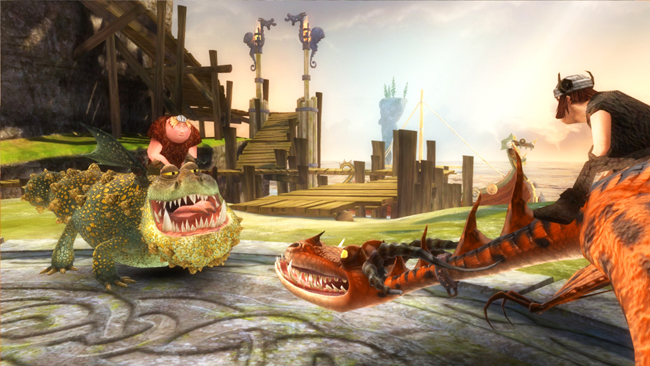
I have this opinion that there is something inherently wrong with the way game adaptations of popular films are made. Instead of making the experiences unique and entertaining, they are designed to be quick and dirty ports of films. Rarely do they go beyond the action-adventure genre, instead utilizing a pre-built game engine. Take Sponge Bob; cut; paste into Drawn to Life; print.
Even though in some cases it seems like a natural fit, video games never live up to the hype of a movie. They either try to match the visuals of a film (Avatar) or add something that isn’t in the movie, potentially breaking the relationship. This is best seen in super-hero games, where the developers will add enemies and situations not found in the movie to help prolong the game experience.
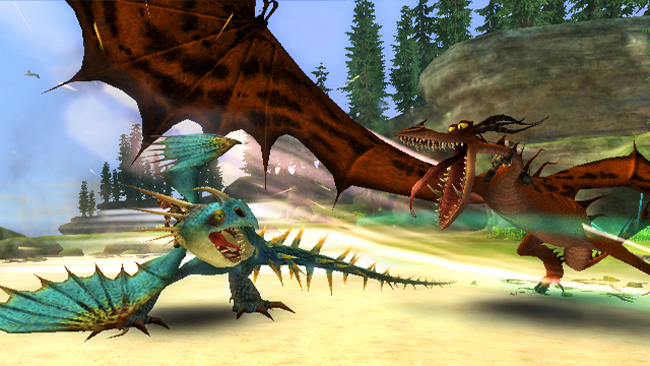
A Fresh Take and a Good Foundation
How to Train Your Dragon did something different… for the most part. It didn’t actually make me care about the movie — at all — but instead got me to look at the game as a whole separate realization.
Taking place a year after the movie, the game has nearly free reign to do as it pleases with storyline development. Doing so maintains the game as an extension of the film instead of a replacement in the home until the DVD is releases. In this case, it focuses on the dragon-training aspect of the film, aiming to function like a simulation RPG in which I was leveling-up my beast through turn-based battles.
On the console versions, moving between locations and missions involved some light action-adventure, as the character (I was able to select between the film’s male and female lead) can run, jump, talk, and beat up livestock in preparation for dragon fighting. On the DS version, the game presented an overworld map and, much like Puzzle Quest, was based on point-to-point movement.
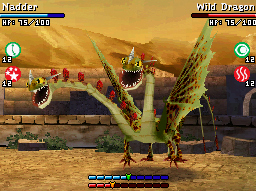 The RPG mechanic seemed to be well-designed, too. Battles were very back-and-forth, and were based on technique over button-mashing. An action bar determined whose turn it was, and each offensive or defensive action took a bit of the bar down each time. As it re-filled in between rounds, it was important to determine what action would be best to keep my bar more full than my enemy’s. The console versions involved timed button and/or waggle combinations, while the DS game allowed for a more traditional menu selection.
The RPG mechanic seemed to be well-designed, too. Battles were very back-and-forth, and were based on technique over button-mashing. An action bar determined whose turn it was, and each offensive or defensive action took a bit of the bar down each time. As it re-filled in between rounds, it was important to determine what action would be best to keep my bar more full than my enemy’s. The console versions involved timed button and/or waggle combinations, while the DS game allowed for a more traditional menu selection.
The visuals looked good across all platforms, which had a nice caveat of being able to use some of the CGI assets from the film to develop the in-game visuals more accurately. Even the DS version, with its blocky polygons, had some great details and colorful aesthetics.
The dragon development had a good amount of depth as well. Character customization — dragons with turkey feathers (!) — and dragon maintenance meant that I had to constantly be aware of how my beast was reacting, leveling, and learning skills. Battle weapons and armor had to be forged via minigames, which were actually enjoyable on the DS version.
The developers seemed to have a great foundation of code to work with when developing the different versions. The risky simulation aspect (risky for mainstream, that is) was the right way to approach the game mechanic, setting it apart from just about any other property-based game in recent memory.
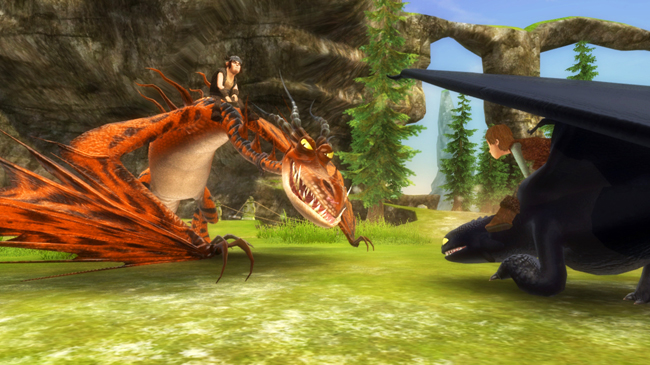
Destined for Mediocrity
Dragon is not without its failings, however.
Delivering a licensed game meant that the development team had to compromise on included features. Several things I noticed made me feel like the game development was rushed to meet the movie release. The repetitive missions and the constant re-use of the minimal assets seemed as if they were designed by hitting “copy, paste, copy, paste” over and over. Perhaps they tried to extend the length of the play time by filling 90% of the game with the same repeating fetch quest, but it felt like there was no story progression taking place.
It was difficult to be thrilled by a game without any real goal — battle, battle, battle. Granted, the battles were fun, but there was really not much else in the game to come back to.
Poor controls were also apart of the game’s shortcomings. In fact, the flight mechanics are so bad that it felt like I was piloting a brick instead of a serpent with wings. These needed to have been top-notch.
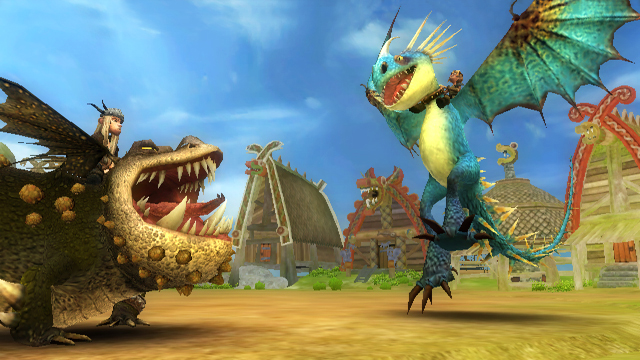
It’s a unique design approach to following a popular film, but the game just doesn’t seem finished. It’s really a shame, as the battles are extremely fun and can become quite challenging towards the end. There is nothing exciting to keep me going along for the ride. The DS version especially feels like it’s “almost there” in becoming a really good game, but misses out. Children will favor the hand held game for its simplicity, whereas adult fans may want it for its short play session design. The developers need to realize this fun play mechanic further in future games, and marketers should use this as an example for how to create a unique, licensed experience.
How to Train Your Dragon is better than being just a licensed game, but it doesn’t surpass mediocrity at being a better video game. It works well in small doses, but may be too repetitive beyond that.
This review is based on copies of the game sent from the publisher for the Nintendo DS and Nintendo Wii, and a rental copy of the Xbox 360 game. All images provided by and courtesy of Activision.

No Comments